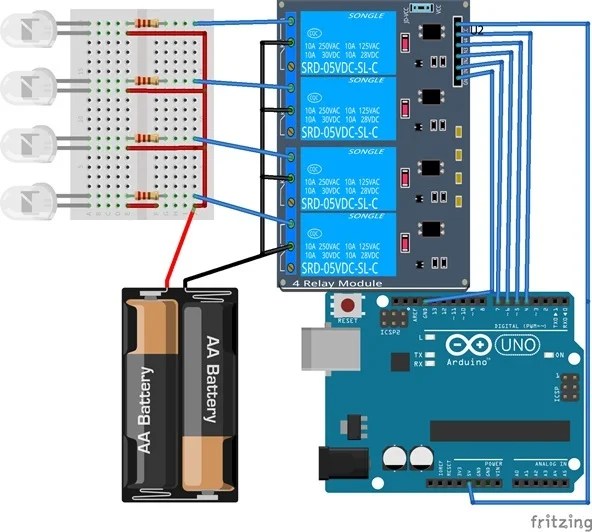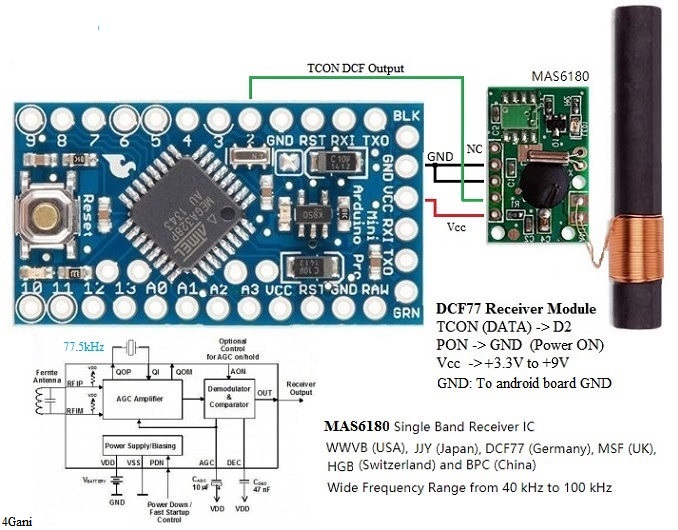- Source Code Fuzzy Logic Arduino Code
- Source Code Fuzzy Logic Arduino Programming
- Source Code Fuzzy Logic Arduino Code
- Source Code Fuzzy Logic Arduino Tutorial
IEEE Transactions on Fuzzy Systems

1.On Computing the Edge-Connectivity of an Uncertain Graph
2.Privacy-Protected Facial Biometric Verification Using Fuzzy Forest Learning
3.Join and Meet Operations for Type-2 Fuzzy Sets With Nonconvex Secondary Memberships
4.Fuzzy Observed-Based Adaptive Consensus Tracking Control for Second-Order Multiagent Systems With Heterogeneous Nonlinear Dynamics
5.New Formulation for Representing Higher Order TSK Fuzzy Systems
6.Modeling Fuzzy and Interval Fuzzy Preferences Within a Graph Model Framework
7.A Novel Adaptive Possibilistic Clustering Algorithm
8.On Viewing Fuzzy Measures as Fuzzy Subsets
9.Linear–Quadratic Uncertain Differential Game With Application to Resource Extraction Problem
10.Distributivity of the Ordinal Sum Implications Over t-Norms and t-Conorms
11.Hybrid Fuzzy Adaptive Output Feedback Control Design for Uncertain MIMO Nonlinear Systems With Time-Varying Delays and Input Saturation
12.New Formulation for Representing Higher Order TSK Fuzzy Systems
13.Encoding Words Into Normal Interval Type-2 Fuzzy Sets: HM Approach
14.Fuzzy Opinion Networks: A Mathematical Framework for the Evolution of Opinions and Their Uncertainties Across Social Networks
15.Fuzzy Observed-Based Adaptive Consensus Tracking Control for Second-Order Multiagent Systems With Heterogeneous Nonlinear Dynamics
16.Ensembles of Fuzzy Linear Model Trees for the Identification of Multioutput Systems
17.Discovering Fuzzy Exception and Anomalous Rules
18.M-Estimates of Location for the Robust Central Tendency of Fuzzy Data
19.Evaluating Choquet Integrals Whose Arguments are Probability Distributions
20.Mean-Based Fuzzy Control for a Class of MIMO Robotic Systems
21.On Computing the Edge-Connectivity of an Uncertain Graph
22.On the Use of Fuzzy Constraints in Semisupervised Clustering
23.Join and Meet Operations for Type-2 Fuzzy Sets With Nonconvex Secondary Memberships
24.The Shortest Path Problem on a Time-Dependent Network With Mixed Uncertainty of Randomness and Fuzziness
25.Investigation of Spatial Control Strategies for AHWR: A Comparative Study
26.Active sample selection based incremental algorithm for attribute reduction with rough sets
27.Fuzzy Group Based Intersection Control via Vehicular Networks for Smart Transportations
28.An Adaptive Fuzzy Logic Based Energy Management Strategy on Battery/Ultracapacitor Hybrid Electric Vehicles - Price RS:8000/-
29.Finding synergy networks from gene expression data: a fuzzy rule based approach
30.Intelligent Demand Response Contribution in Frequency Control of Multi-area Power Systems
31.Fuzzy Control for Uncertain Vehicle Active Suspension Systems via Dynamic Sliding-Mode Approach
You can generate code for evaluating a fuzzy inference system using MATLAB® Coder™. For more information on generating code, see Code Generation (MATLAB Coder).
May 17, 2017 Creates the rule of inference for the fuzzy logic. This function works like this: 'if input variable is inputterm then outputvariable is outputterm '. Uint8t setVariableValue (uint8t, float); Sets a value to the term of the variable. This value is set based on the X axis. Float getVariableValue (uint8t). The heart of the project is Fuzzy Logic, a soft computing technique which makes use of knowledge base made by the experts (doctors in this case) to predict the disease severity. Css html jquery php ajax web-application bootstrap3 fuzzy-logic soft-computing. Updated on Jun 3. Fuzzy-logic algorithm is used in the control of temperature, pH and water level. This algorithm is implemented in Arduino Uno microcontroller 5. 1) Pseudo-Code - Start Check for the pH, water level, temperature If the pH is lower than 7, add basic compound until pH = 7.
To generate code for evaluating fuzzy systems, you must first create a fuzzy inference system (FIS). For more information, see Build Fuzzy Systems at the Command Line and Build Fuzzy Systems Using Fuzzy Logic Designer.
While this example generates code for a type-1 Mamdani fuzzy inference system, the workflow also applies to Sugeno and type-2 fuzzy systems.
Generating code using MATLAB Coder does not support fuzzy FIS objects (mamfis, sugfis, mamfistype2, sugfistype2). To generate code for evaluating fuzzy systems, you must convert your fuzzy inference system objects into homogeneous structures using the getFISCodeGenerationData function.
Embed FIS Data in Generated Code
Source Code Fuzzy Logic Arduino Code
You can embed the data for your fuzzy inference system within the generated code. Use this option if you do not want to change the FIS data after compilation.
First, create a fuzzy system, or load a fuzzy system from a .fis file. For this example, load the fuzzy system from tipper.fis.
To use this FIS for code generation, convert it to a homogeneous structure.
By default, getFISCodeGenerationData assumes that the FIS object is a type-1 system. To generate code for a type-2 system, you must indicate the system type using getFISCodeGenerationData(fisObject,'type2').
Create a function for evaluating the fuzzy system fis for a given input vector x. Within this function, you can specify options for the evalfis function using evalfisOptions.
Generate code for evaluatefis1, specifying that the fis input argument is constant. You can specify different targets for your build, such as a static library, an executable, or a MEX file. For this example, generate a MEX file.
To verify the execution of the MEX file:
Evaluate the MEX file for one or more input values. When you call the MEX file, specify the same FIS structure that you used at compile time.
Evaluate the original FIS for the same input values using
evalfis. When evaluating usingevalfis, use the same homogeneous FIS structure.Compare the evaluation results.
The MEX file output matches the evalfis output.
Source Code Fuzzy Logic Arduino Programming
Alternatively, you can embed the FIS data in the generated code by reading the FIS data from a file at code generation time. Specify a function for evaluating a fuzzy system for given input vector x. Within this function, read the FIS data from the file tipper.fis.
Generate code for evaluatefis2.
Verify the execution of the MEX file using the same input values for x. In this case, you do not have to specify the original FIS structure used at compile time.
Generate Code for Loading FIS Data at Run Time
You can generate code for evaluating a FIS that is read from a .fis file specified at run time. In this case, the FIS data is not embedded in the generated code. Specify a function for evaluating the fuzzy system defined in the specified file fileName for a given input vector x.
Define input data types for this function.
Generate code for evaluatefis3.
Verify the execution of the MEX file using the same input values for x. In this case, you specify the name of the .fis file.
Each time you run evaluatefis3, it reloads the fuzzy system from the file. For computational efficiency, you can create a function that only loads the FIS when a new file name is specified.
Generate code evaluatefis4. The input data types for this function are the same as for evaluatefis3.

Verify the execution of the MEX file using the same input values file name.
Generate Code for Single-Precision Data
The preceding examples generated code for double-precision data. To generate code for single-precision data, specify the data type of the input values as single. For example, generate code for evaluatefis2 using single-precision data.
Source Code Fuzzy Logic Arduino Code
Verify the MEX file execution, passing in single-precision input values.
See Also
evalfis | getFISCodeGenerationData